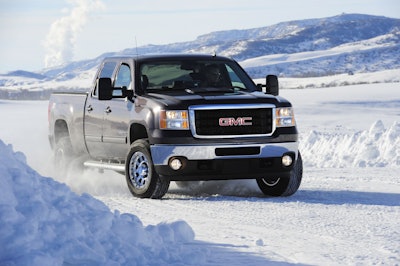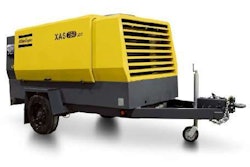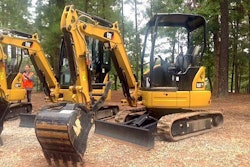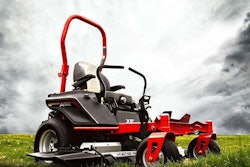
When winter rains and snows hit, reminding company drivers on the basics of winter driving is a good subject.
One of the best ways to avoid slipping and sliding in a vehicle this winter is to improve the contact points between the vehicle and the road surface according to Steve Rohweder, Goodyear director of consumer tire technology.
Rohweder suggests companies in the northern tier states opt for a seasonal changeover that employs true winter tires to maximize vehicle traction in ice and snow conditions.
“The bottom line for fleet managers is being aware of the severe winter driving conditions they might face,” Rohweder says. “Based on past experiences, do they feel their winter weather is moderate enough to choose a year-round tire, or are they mandated to use winter tires? Or do they face sometimes severe winter weather, and they prefer the peace of mind offered by true winter tires?”
Whatever tire is chosen, Ian Law, professional ice racer and lead instructor at the ILR Car Control School in Ontario, Canada, offers these tips for those who will be faced with potential slippery driving conditions this winter:
- Match your driving speed to the current conditions. If conditions are challenging due to a slippery road surface or reduced visibility, decrease your speed. A slower driving speed allows more time for a necessary response.
- Additional factors to consider when adjusting speed are the condition of the vehicle, its tires and your driving abilities. Always keep in mind the posted speed limits, and understand that those limits indicate the maximum speed when weather conditions are good.
- Plan ahead and try to anticipate potentially dangerous situations. When approaching a curve or potentially slick area of the road, use the brakes effectively. The brakes should be applied only before a curve and on a straight section of the road. Sometimes, taking your foot off the accelerator and allowing the vehicle to naturally slow without using the brakes is best.
- Be alert to other vehicles. Maintain enough distance between your vehicle and the one ahead of you. If someone else seems to be following too close to your vehicle, perhaps slow down to allow them to pass – rather than speeding up to achieve a distance between vehicles.
- If visibility is poor, remember to use your lights. This helps other drivers to see you when approaching or when following. You should always turn your lights on when your windshield wipers are on.
- Set the vehicle cabin to a comfortable temperature. This can be a challenge during winter when drivers and passengers may be wearing heavy coats in a vehicle, but it is imperative to be comfortable when driving. Cabin comfort includes keeping the windows free of frost, ice and snow.
- Be as smooth as possible, avoiding sudden braking and steering responses. Always signal early when turning or stopping, in order to alert approaching or following drivers.
- Avoid overconfident driving, and avoid overestimating the vehicle’s capability simply because it is equipped with anti-lock brakes, four-wheel drive, traction control, winter tires or other safety devices. Do not allow good judgment and smart driving to be overtaken by a false sense of security provided by vehicle technology.
- Before driving in inclement weather, be sure that your vehicle is properly maintained. Make sure your windshield wipers work properly; have the correct level of antifreeze for heating and defrosting the vehicle; keep plenty of gas in the tank; and always use required safety devices such as seatbelts.
“Preparation – of the vehicle and the driver – is the key for [safe] winter driving,” Law says. “When it comes to driving on the changing road conditions, ranging from dry, wet, icy and snowy, one of the most important factors to consider are the tires. It doesn’t matter if it’s a front-, rear- or four-wheel drive vehicle; it will perform better if the vehicle has good tires.”
EDITOR’S NOTE: Bruce Smith is a senior editor at Randall-Reilly.










